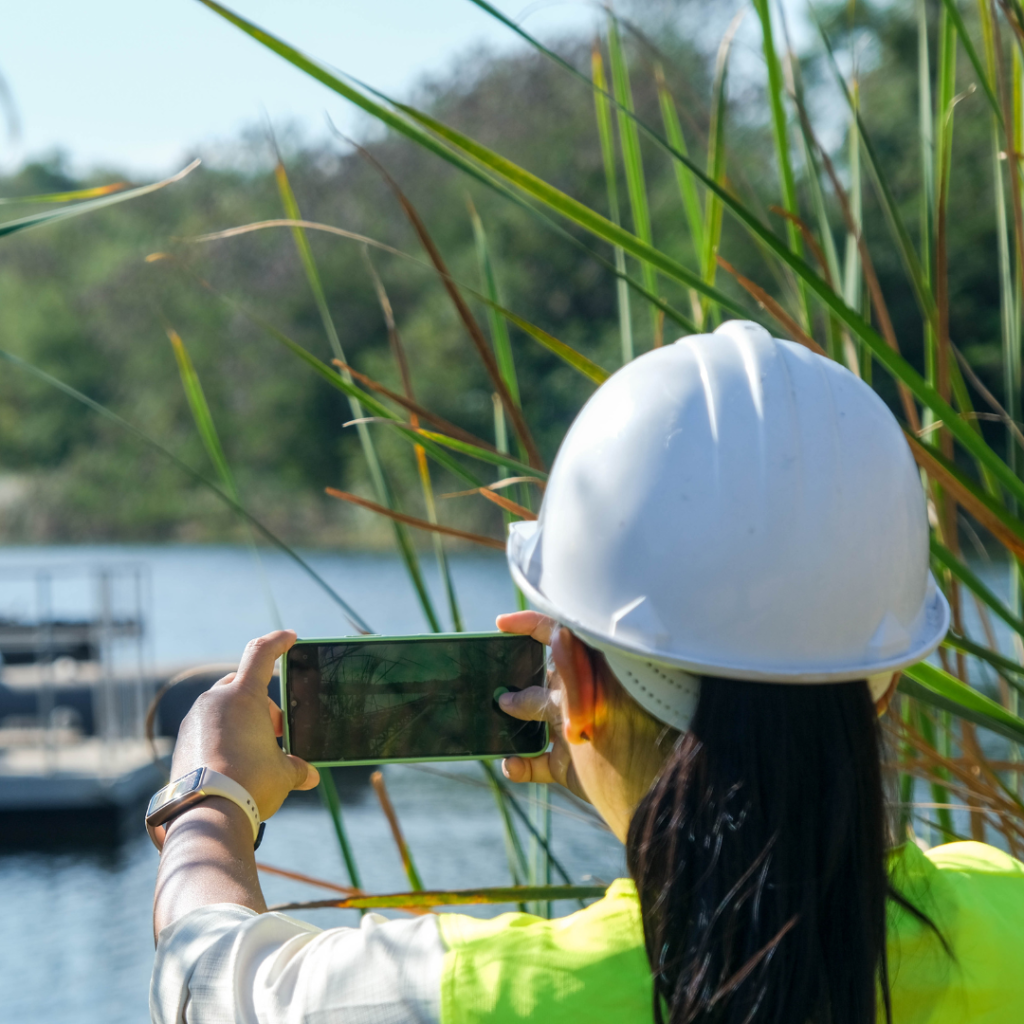30 Most LGBTQ-Friendly Graduate Schools in America

Find your perfect college degree
Outside the home, the school is the primary vehicle for educating and socializing the young. It is an institution that helps American citizens become successful and productive members of society. Since it plays an important role in society, ensuring a healthy and professional educational environment is necessary for learning institutions–particularly for the LGBT community.
The American educational system is not perfect. Regardless of their sexual orientation or gender identity, schools can be difficult. Thus, an unhealthy environment can lead to various issues that will affect a student’s academic performance and well-being.
The minority always bears the brunt of the consequences of a toxic environment. Persons who identify as lesbian, gay, bisexual, transgender, intersex, queer, etc., are often affected as they are the most vulnerable to stigma and violence.
Due to their orientation and identity, they are always the victims of harassment and abuse that can leave lasting effects on their social and mental health. This may lead to the likelihood of students avoiding school. Coming out presents a risk of homelessness or forces them to do sex work to survive. For this reason, it is important to ensure an LGBT-friendly school environment.
This article will discuss the challenges the LGBT community face in the school setting and the importance of an inclusive curriculum in ensuring the success of students in graduate school. A list of the 30 most LGBT-friendly graduate schools in America will be provided and discussed.
LGBT Friendly Environment
What is an LGBT-friendly environment?
An LGBT-friendly environment simply means an environment that is safe for LGBT students to be their authentic selves. There exists a supportive and welcoming school environment where the students are physically and emotionally safe. Being physically and emotionally safe assumes that their LGBT identity is respected and embraced.
Every student has the right to a safe, supportive learning environment. For this to be possible, research suggests that policies ensure that students are safe from harm. There must be an avenue for those who suffer from harassment, assault, or bullying to be able to speak to supportive teachers or other adults in their schools.
Being an LGBT-friendly environment is a result of the call for inclusivity. Thanks to the visibility of LGBTQ people, particularly in K-12 and higher education, some civil rights like marriage equality and some state or local-level protection against bullying and hate crimes were granted over the years.
As the call for LGBT inclusion has been stronger than ever, having an LGBTQ-friendly environment in schools and other spaces became important. This resulted in policies and laws that help prevent violence and abuse to marginalized sectors.
Along with establishing support groups, schools aim to foster safer, more supportive environments by developing and implementing policies that protect LGBT persons from discrimination, violence, and bullying.
Assessing school climate using tools such as the Gay, Lesbian, & Straight Education Network (GLSEN) school climate survey helps a lot. Training of teachers and school staff is conducted. Organizations and clubs are also established to expand school-based support for LGBT youth.
A variety of resources are used to help educators foster a healthy and safe school environment for all. Some of these resources are as follows:
- Gay, Lesbian, and Straight Education Network (GLSEN)
GLSEN envisions a world where every child learns to respect and accept all kinds of people. It works to ensure that LGBTQ students grow in a safe and inclusive environment.
- Gay-Straight Alliance Network (GSA Network)
Gender and Sexuality Alliance, Queerstraight Alliance, or Gay-Straight Alliances are student-run and teacher-supported school-based groups that provide a safe space for students to meet, socialize and support one another. They ensure safe, caring, supportive, and inclusive spaces for LGBTQ students and their allies in schools.
- getR.E.A.L (Recognize. Engage. Affirm. Love)
getREAL utilizes child welfare policy and practice to promote the healthy development of LGTBQ+ and gender expansive youth. Through the getREAL projects, attention is on the planning for the healthy sexual and identity development of all children and youth. They ensure that all young people feel valued and affirmed to embrace their authentic selves in all aspects of their identity, including their sexual orientation, gender identity, and expression (SOGIE).
- Guide for Understanding, Supporting, and Affirming LGBTQI2-S Children, Youth, and Families
- Key Policy Letters from the Education Secretary and Deputy Secretary
Policies and practices that affirm and support LGBT youth like those above are already in place. However, even if there are already existing policies and practices for inclusivity, problems still arise from the failure to implement existing protections.
LGBTQ Challenges in the School Setting
The violence and discrimination that the LGBTQ community experiences undermines their fundamental human rights to education, personal security, freedom from discrimination, access to information, free expression, association, and privacy. LGBT rights are also human rights.
Equal access to opportunities and services must be provided to everyone regardless of their sexual orientation, or gender identity deserves equal access to opportunities and services. Their safety should be protected.
Major concerns are exclusion from school curricula and resources, restrictions on LGBT student groups, and other forms of discrimination and bigotry based on sexual orientation and gender identity. Apart from this, there are also challenges in accessing proper sexual health services due to discrimination or lack of expertise among service providers.
Sex education is often catered to heterosexuals and not open to addressing the needs of LGBTIQ youth.
When it comes to the facilities available, it is shown that half of the trans and gender-expansive youth refrain from using school bathrooms because they cannot use that which aligns with their gender identity. LGBTQ youth report they often receive unwanted sexual comments, jokes, and gestures.
Negative comments may also come from family members. Forty-eight percent of LGBTQ youth out of the closet reported that their families make them feel bad for being a member of the LGBTQ. Coming out was extremely stressful for them.
Eighty-five percent of the teen participants of the survey conducted by Medscape rated average stress level as five or higher on a 10-point scale. Ninety-five percent reported having trouble sleeping at night.
Of about 12,000 LGBTQ teens, 77% reported feeling depressed, and 70% reported having feelings of worthlessness. This is usually caused when they reach the age where they begin to question or get confused over their gender or sexual identities.
Problems will start to arise, making students endure an especially hard time in school. It was found that over 55% of LGBT students felt unsafe at school due to their sexual orientation. Bullying is at its worst in middle school. Despite these statistics, 26% said they always feel safe in their schools, and 5% said all of their teachers and school staff were supportive of LGBTQ people.
The Human Rights Watch interviewed over 500 participants, from students, teachers, administrators, parents, and service providers to advocates. Four main issues that LGBT people continue to experience in school were reported. As mentioned earlier, bullying is a problem.
In 2001, Hatred in the Hallways: Violence and Discrimination against LGBT Students in US Schools was published to address these issues. It gave light to the bullying and discrimination against LGBT students in schools. This urged policymakers to take steps to protect the rights of LGBT youth.
Since then, lawmakers and school administrators have begun to recognize that the LGBT is a vulnerable population and needs to foster an inclusive curriculum. A curriculum built on mutual respect can combat hostile school environments and increase the success and productivity of the students.
However, many states and school districts still lack protection from discrimination based on sexual orientation or gender identity. As more and more transgender and gender non-conforming students have become more visible, this is becoming a problem. Thus, an inclusive school environment is needed.

Benefits of an Inclusive Curriculum
Inclusive education means creating school policies and lessons to allow all persons to participate and learn. It is finding ways of teaching where the classroom actively involves all kinds of persons regardless of gender identity or sexual orientation. Inclusive schools help students understand and respect differences, providing LGBTQ students with a healthy environment to grow and learn.
Apart from those mentioned earlier, LGBT students can also learn about their rights. There are also resources for educators. For example, GLSEN developed a ”Safe Space Kit” for educators. The Safe Space Kit is a guide to being an ally to LGBT students. Safe Space Kit works as a guide for educators to create a safe space for LGBT students.
It should not be forgotten that inclusiveness in schools starts with students and educators knowing their legal rights. It is important to know these to take proper action. Guides on how to face homophonic harassment at school and tips on how to report such incidents are provided by the American Civil Liberties Union (ACLU).
Inclusivity is one of the ways that will allow students to succeed in all levels of education. This also includes success in graduate school.
It is not only the LGBT people that are part of the call for inclusiveness. Women are also a portion of the population that is benefited by inclusivity. Nowadays, women are attending college and earning advanced degrees at unprecedented rates.
According to Lennon (2013), this can be attributed to more women of color attending college. Women typically cannot earn as much as men without a college degree, which is also causing more women to pursue higher education.
According to the statistics provided by the National Science Foundation in 2015, women earn 60% of baccalaureate degrees and 46% of doctoral degrees. Of all the graduate students in the US, women represent 58.5%. Now, 141 women are enrolled in graduate school for every 100 men. The rates differ for each field. For example, 75.4% is composed of females; for health and medical sciences, it is 78.4%, and 77.9% for public administration.
Women enrolled in graduate school outnumber men in 7 out of the 11 graduate schools. Females are only a minority of graduate students in business where they comprise 46.5%, engineering (27.2%), Math and Computer Science (32.2%), and Physical and Earth Sciences (38.8%).
For 11 straight years, women earned the most doctoral degrees in the country. Out of 79,548 doctoral degrees awarded in 2019, 41,943 women comprised 52.9% of the total graduate population. On the other hand, only 37,365 degrees were awarded to men.
Graduate School Attrition Rate
The graduate school program is traditionally centered on conducting original research in a particular academic field. It may also be centered on developing skills and knowledge for a specific profession or both.
In comparison to undergraduate studies, graduate schools are focused on courses of study and research work. Professors conduct work evaluations in a structured manner. Student interaction work experiences are available via internships, teaching, research, and the production of original research.
However, the process can be stressful and hectic. Students need to manage the demands of the task to conduct top-quality research. Students are not immune to being sidetracked either, which is why not everyone can complete grad school.
The Council of Graduate Schools advised that if the US wanted to be one of the world’s innovators and leaders, it should start with a strong graduate system. The council is where the graduate dean community decides on policies and activities dedicated solely to advancing graduate education and research.
Aiming to increase the participation and success of underrepresented groups in graduate education, it is active in the policy arena, innovative research, and the development and dissemination of best practices. It is an avenue where graduate deans and other stakeholders convene and organize major events to act on a broad range of issues affecting graduate education.
In 2012, ten recommendations were given by the National Academies report. One of them is the need to reform graduate education. It mentions issues such as high attrition rates, long time-to-degree lengths, and career placements. Attrition rates in graduate school are as high as 33% in some disciplines.
According to the data provided by the Council of Graduate Schools and the Graduate Record Examinations Board, more than 1.8 million students were enrolled in graduate-level studies in 2016. Applications increased by 1.2 percent between fall 2015 and 2016.
Despite the continued growth of applications and enrollment, the National Association of Student Financial Aid Administrators found that only 76% of individuals enrolling in Ph.D. programs completed their degrees, while 61% of master’s students earned a diploma.
Studies show that this attrition rate resulted from poor academic support, mentoring, integration, and socialization. To curtail these horrendous attrition rates, the federal government and national organizations started to take notice and ask questions regarding attrition rates, graduation rates, publication rates, and employment rates after investing money into graduate education. The same attention and focus provided to undergraduates will be given to graduate students.
Succeeding in graduate school requires determination and time management. Brown writes in his article “Maximizing Success in your graduate training” that the first sign of a successful graduate school career is a timely completion of the chosen degree. For a doctoral program, this means 5 or 6 years. Successful students have their time frame in mind as they move through graduate school. They pay attention to deadlines and work with purpose.
He further discusses that the second sign of success in graduate school is getting a job upon graduation. For academic positions, this means having research publications and getting teaching experience. All the work in graduate school should be geared towards meeting these objectives.
Brown explains that students must constantly ask themselves, “Can I turn this work into a publication? Does this add to my teaching experience? Does this provide me with important knowledge or training that I may be able to use in the future?”
However, attitude towards their studies is not the only thing that contributes to a graduate student’s success. Having a healthy school environment is also a must. To make this possible, graduate schools also conform to the call for inclusivity. They aim to engage in creating a diverse and inclusive academic community by educating and training students.
Some schools create an action plan which formalizes and expands upon their already existing inclusivity policies. Sponsoring events and conducting activities for underrepresented minority students are the means to do this.
Assisting in various student associations and clubs, which includes support to students who identify as LGBTQ, is another.
Key to Student Success in Graduate School
To guide the students who want to proceed to graduate school, the University of Nebraska-Lincoln published seven keys to graduate school success. The keys are as follows:
- Taking responsibility for graduate school experience,
- Participation in the intellectual community of their department and campus,
- Knowing program requirements and timelines,
- Creation of an annual plan,
- Establish positive relationships with supervisors and members of their academic committees,
- Professional approach to studies and interactions with peers,
- Seeking balance and support in life.
Taking responsibility for graduate school experience.
Students should think about what they want from their graduate school. They must identify opportunities to attain those goals.
Participation in the intellectual community of their department and campus.
Participation is a must to build a strong bond with colleagues and faculty. By having a strong bond and connection, students can ask for advice or seek help for success. Students mustn’t isolate themselves from their faculty and peers.
As much as they can, students should attend seminars and lectures within and beyond their program or department to learn more.
Knowing program requirements and timelines.
In graduate school, requirements need to be submitted for completion. Graduate students need to pay attention to their coursework, exams, thesis, and presentation to keep up.
According to education expert Chassidy Green, grad students are busy. Seventy-six percent of graduate students put in at least 30 hours a week to work on their course work, which is why diligence in managing the time for reading and being in study groups are extremely important.
Create an annual plan.
It is advised that students track their specific program requirements, schedule meetings with their supervisor and committee, publish articles, attend conferences, and present.
Establish positive relationships with supervisors and members of their academic committees.
Once a year, students may plan to schedule regular meetings with their entire supervisory committee. In these meetings, there must be a clear purpose for communicating an agenda. Follow-ups on items discussed in these meetings should be conducted.
Professional approach to studies and interactions with peers.
Having a professional approach in their studies is important, as grad school can be stressful. Career-building key skills in organization, preparedness, collegiality, and budgeting are important for a successful and well-rounded graduate. It is also advised that graduate students take workshops on teaching and mentoring an undergraduate researcher.
Seeking balance and support in life.
It is important to have balance in life. Students must remember that they have friends and family outside of graduate school. It is not good to immerse oneself too much in graduate school at the expense of sacrificing other important aspects of life.
Apart from the ones mentioned above, it is advised that graduate students should build and nurture flexibility, perseverance, critical thinking, confidence, and a genuine passion for learning.
Despite the high attrition rates in most graduate schools, a college in a southeastern university maintained attrition rates between five and seven percent and a time-to-degree of 6.5 years for doctoral students and 3.5 years for master’s students over three years.
These activities have been implemented based on the research that presents strong student persistence and outcomes:
- Recruitment Weekend
- New Student Orientation
- Student Group
- Lunch with the Dean
- Spring Fling
- Annual Student Workshop.
- Student Participation on College Committees
- Graduate Student Symposium
- Weekly Seminars
- Progress Reports
These activities recognize the importance of community interaction, assistance, and a healthy dose of fun. By identifying these activities as a model for graduate student’s success, Nacada affirms that “It is not what the students bring with them into the graduate program that causes them to depart, but what happens to them after they begin the experience.”
America’s 30 Most LGBT-Friendly Graduate Schools
The first step in beginning your experience is by choosing the most LGBT-friendly graduate schools in America. With this, we will depend on the data provided by Campus Pride.
Campus Pride Index is the go-to site for anything related to colleges, universities, and schools that offer a welcoming environment for LGBTQ students. The country’s premier benchmarking tool determines how safe and inclusive campus communities are across America.
The Campus Pride Index ensures that the schools’ data relating to LGBTQ-inclusive policies, programs, and practices are made available online. It partners with various non-profit organizations that share their purpose – creates a safer and more LGBTQ-friendly environment at colleges and universities. It has been doing so for almost 15 years when it started in 2007. The best part is all their resources are free!
Based on our research, and with the help of the data from Campus Pride, we have come up with the following 30 most LGBT-friendly graduate schools in America.
Pennsylvania State University
State College, PA

Graduate Student Population: 15,328
Average Tuition Before Aid: $36,962
Average Tuition After Aid: $30,996
Campus Pride Index: 5 out of 5 stars
Pennsylvania State University’s Center for Sexual and Gender Diversity
“The Center for Sexual and Gender Diversity (CSGD) provides a comprehensive range of education, information, and advocacy services to students, faculty, staff, and alumni. We create and maintain an open, safer, and inclusive environment honoring gender and sexual diversity. Through educational, social, and supportive programming, along with workshops and individual consultation, the Center for Sexual and Gender Diversity strives to serve the entire Penn State community.”
University Of Wisconsin – Milwaukee
Milwaukee, WI

Graduate Student Population: 15,328
Average Tuition Before Aid: $24,514
Average Tuition After Aid: $17,661
Campus Pride Index: 5 out of 5 stars
“The University of Wisconsin-Milwaukee is one of the nation’s top campuses for LGBTQ+ students and is currently rated 4.5 stars by Campus Pride as an LGBTQ+ friendly University. We have earned one of the highest scores attainable in terms of creating a safe and welcoming campus for LGBTQ+ students and their allies.”
Kent State University
Kent, OH

Graduate Student Population: 5,565
Average Tuition Before Aid: $26,670
Average Tuition After Aid: $17,807
Campus Pride Index: 5 out of 5 stars
Kent State University’s LGBTQ+ Center
“The Lesbian, Gay, Bisexual, Transgender, and Queer Plus (LGBTQ+) Center is dedicated to providing the students, faculty, and staff at Kent State University with education, training, support, and resources that cater to the gender and sexual minority community and its allies.”
Purdue University
West Lafayette
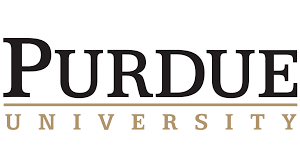
Graduate Student Population: 4,400
Average Tuition Before Aid: $22,882
Average Tuition After Aid: $12,527
Campus Pride Index: 5 out of 5 stars
Purdue University’s Lesbian, Gay, Bisexual, Transgender, and Queer Center
Princeton University
Princeton, NJ

Graduate Student Population: 2,845
Average Tuition Before Aid: $74,150
Average Tuition After Aid: $9,749
Campus Pride Index: 5 out of 5 stars
Princeton University’s LGBT+ Center
“We are about… building a Princeton community where people of all sexual orientations and gender identities feel heard, affirmed, valued, and respected.”
University of Pennsylvania
Philadelphia, PA

Graduate Student Population: 12,413
Average Tuition Before Aid: $77,264
Average Tuition After Aid: $25,033
Campus Pride Index: 5 out of 5 stars
University of Pennsylvania’s LGBT Center
Rutgers University
New Brunswick, NJ, United States

Graduate Student Population:
Average Tuition Before Aid: $33,457
Average Tuition After Aid: $20,623
Campus Pride Index: 5 out of 5 stars
Rutgers University’s The Center for Social Justice Education and LGBT Communities (SJE)
“The Center for Social Justice Education and LGBT Communities (SJE) provides educational and social programs, leadership development, and policy consultation for LGBTQIA and ally students, faculty, staff, and community members.”
Massachusetts Institute of Technology (MIT)
Cambridge, MA

Graduate Student Population: 6,990
Average Tuition Before Aid: $73,160
Average Tuition After Aid: $18,278
Campus Pride Index: 4.5 out of 5 stars
Massachusetts Institute of Technology’s (MIT) LGBTQ+ Services
“LBGTQ+ Services supports numerous student, employee, and alumni groups as well as other departments and initiatives on campus aiming to foster equity, intersectionality, and the continuum of social justice. From individual student support to organizational development and institutional policy advocacy, LBGTQ+ Services’ support, programming, and educational endeavors aim to enhance the experiences of MIT’s LBGTQ+ community.”
University of Massachusetts Amherst
Amherst, MA

Graduate Student Population: 7,409
Average Tuition Before Aid: $31,793
Average Tuition After Aid: $21,396
Campus Pride Index: 5 out of 5 stars
University of Massachusetts Amherst’s The Stonewall Center
A Lesbian, Gay, Bisexual, Trans, Queer, Intersex, and Asexual (LGBTQIA+) Resource Center
“The mission of the Stonewall Center is to provide support, resources, programming, and advocacy for lesbian, gay, bisexual, trans, queer, intersex, asexual (LGBTQIA) and allied students, staff, and faculty at UMass Amherst and for the surrounding Pioneer Valley. We also seek to educate the campus and local community about heterosexism, genderism, racism, transmisogyny, and other forms of oppression and intersectionalities. We do this to strengthen and sustain an inclusive climate for LGBTQIA individuals and their allies. We work closely with other campus departments, offices, and local organizations to foster student learning, development, and leadership and to support individual academic success while building LGBTQIA communities and enhancing the lives of people of all sexual orientations and gender identities.”
Kansas State University
Manhattan, KS

Graduate Student Population: 4,509
Average Tuition Before Aid: $25,314
Average Tuition After Aid: $18,450
Campus Pride Index: 5 out of 5 stars
Kansas State University’s LGBT Resource Center
“Kansas State University has been ranked No. 7 in Study.com’s Top 50 LGBTQ-Friendly Colleges. The list of colleges was formed using data from leading LGBTQ advocacy groups, reports from students and faculty, and a comprehensive range of LGBTQ-inclusive factors.”
The Ohio State University
Columbus, OH
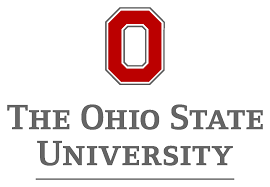
Graduate Student Population: 11,095
Average Tuition Before Aid: $27,912
Average Tuition After Aid: $17,704
Campus Pride Index: 5 out of 5 stars
Indiana University, Bloomington
Bloomington, IN

Graduate Student Population: 8,500
Average Tuition Before Aid: $25,657
Average Tuition After Aid: $13,428
Campus Pride Index: 5 out of 5 stars
Indiana University, Bloomington’s LGBTQ+ Culture Center
“IndianaUniversity’s LGBTQ+ Culture Center is open for everyone. It serves as a safe and inclusive gathering space for LGBTQ+ students—a place where people are given the encouragement and resources to build meaningful relationships across differences and open their minds and hearts to matters relating to race, gender, and sexual orientation. “
Byrn Mawr College
Bryn Mawr, PA

Graduate Student Population: 306
Average Tuition Before Aid: $73,540
Average Tuition After Aid: $29,334
Campus Pride Index: 5 out of 5 stars
Byrn Mawr College’s Pensby Center for Community Development and Inclusion
“The Pensby Center for Community Development and Inclusion implements programs and activities that address issues of diversity, power and privilege, including but not limited to race, ethnicity, country of origin, class, gender, sexual orientation, religious affiliation, and disability, with a goal of improving the campus climate and enhancing community life at Bryn Mawr College.”
Ithaca College
Ithaca, NY

Graduate Student Population: 400
Average Tuition Before Aid: $64,091
Average Tuition After Aid: $33,164
Graduate School Admission: admission@ithaca.edu; (800) 429-4274 or (607) 274-3124
Campus Pride Index: 5 out of 5 stars
Ithaca College’s Center for LGBT Education, Outreach & Services
“Our campus is home to a diverse, vibrant, and engaged community of lesbian, gay, bisexual, transgender (LGBT), and allied students, staff, and faculty. Many LGBT and allied people have found the campus and surrounding community an ideal place to learn, work, and live.”
Lehigh University
Bethlehem, PA

Graduate Student Population: 1,775
Average Tuition Before Aid: $71,465
Average Tuition After Aid: $30,832
Campus Pride Index: 5 out of 5 stars
Lehigh University’s The Pride Center for Sexual Orientation & Gender Diversity
“The Pride Center for Sexual Orientation & Gender Diversity exists to build a just, equitable world through community building and the pursuit of change. We work to create a world where people of all genders and sexualities are able to thrive as their full, authentic selves. “
Southern Illinois University
Carbondale, IL

Graduate Student Population:
Average Tuition Before Aid: $29,567
Average Tuition After Aid: $16,843
Campus Pride Index: 5 out of 5 stars
“The Lesbian, Gay, Bisexual, Trans*, Queer (LGBTQ) Resource Center, a unit of The Dean of Students, serves as a centrally located, safe campus space that provides educational outreach, referral information, and advocacy services, which will add to an inclusive and diverse environment for LGBTQ students, faculty, staff, families, friends, alumni, and the greater community of Southern Illinois.”
Washington State University
Pullman, WA

Graduate Student Population: 947
Average Tuition Before Aid: $27,991
Average Tuition After Aid: $15,768
Campus Pride Index: 5 out of 5 stars
Washington State University’s Gender Identity/Expression and Sexual Orientation Resource Center
“The Gender Identity/Expression and Sexual Orientation Resource Center serves and supports LGBTQ+ students, faculty, staff, and alumni throughout the Washington State University system by providing resources, fostering community building, and relevant initiatives. Additionally, we promote academic and personal growth, learning, and development for students.”
Case Western Reserve University
Cleveland, OH

Graduate Student Population: 6,035
Average Tuition Before Aid: $69,638
Average Tuition After Aid: $32,938
Campus Pride Index: 4.5 out of 5 stars
Case Western Reserve University’s Lesbian Gay Bisexual Transgender Center
“Case Western Reserve University is proud of the rich history of LGBT activism on campus. The benefits of the hard work and determination of students, faculty, and staff of long ago are still felt today as new leaders in each of these groups continue to create an awareness of the issues our community faces.”
California State University, Long Beach
Long Beach, CA

Graduate Student Population: 3,408
Average Tuition Before Aid: $25,258
Average Tuition After Aid: $8,982
Campus Pride Index: 4.5 out of 5 stars
California State University, Long Beach’s LBGTQ Services
American University
Long Beach, CA

Graduate Student Population: 4,198
Average Tuition Before Aid: $67,694
Average Tuition After Aid: $34,617
Campus Pride Index: 4.5 out of 5 stars
American University’s LGBTQ Community
“American University prides itself in being an affirming place for the lesbian, gay, bisexual, transgender, queer and asexual community and its allies. Throughout your time here at AU, you will have the opportunity to participate in a variety of programs/events/services geared towards the LGBTQA community and those interested in LGBTQA issues.”
Portland State University
Portland, OR

Graduate Student Population: 5,020
Average Tuition Before Aid: $26,955
Average Tuition After Aid: $13,856
Campus Pride Index: 5 out of 5 stars
Portland State University Queer Resource Center
“The Queer Resource Center’s physical space remains closed to keep our community safer. We continue to provide community spaces, resources, and support virtually. We have adapted many of our resources to remain accessible online and have compiled other resources to support those working and learning from home.”
University of Colorado Boulder
Portland, OR

Graduate Student Population: 5,904
Average Tuition Before Aid: $31,034
Average Tuition After Aid: $21,510
Campus Pride Index: 5 out of 5 stars
University of Colorado Boulder’s Center for Inclusion and Social Change
Driven by their core values:
- Transformative Educational Opportunities Provide interactive intercultural and social justice educational workshops to promote students’ growth and development, broaden their worldview, and transform their self-perception through purposeful and meaningful interactions with others and thoughtful reflection.
- Intersectional Identity, Personal, and Intercultural Development Provide ongoing support to underserved populations via identity affirmation activities, which are fundamental to students’ psychological well-being, sense of validation, intercultural competence, and ability to reach their full potential.
- Service Provides experiential learning opportunities to build a community of scholars committed to service and promote transformational growth and social justice in action.
- Cross-Cultural Engagement Provide cultural programming to educate, engage, and provide/build a community for and between the diverse student populations on campus.
West Virginia University
Morgantown, WV

Graduate Student Population: 4,263
Average Tuition Before Aid: $23,738
Average Tuition After Aid: $12,539
Campus Pride Index: 4.5 out of 5 stars
West Virginia University’s LGBTQ+ Center
“The LGBTQ+ Center provides programming and academic resources for WVU students, faculty, staff, and community members. Situated in Academic Affairs and reporting to the Office of the Provost, we help enact the academic mission of the modern land grant university. We support the university’s educational, social justice efforts through trainings, classes, and advocacy on WVU campuses and across the state. Attention to LGBTQ-related inequities also requires addressing all aspects of inequality, including homophobia, transphobia, racism, misogyny, xenophobia, ableism, and more.”
Tufts University
Medford, MA

Graduate Student Population: 5,781
Average Tuition Before Aid: $76,200
Average Tuition After Aid: $31,485
Campus Pride Index: 5 out of 5 stars
Tufts University’s LGBT Center
“Founded in 1992, the LGBT Center offers a space for all students, faculty, and staff to explore their unique relationship to gender and sexuality through personal, activist, or academic lenses. The Center provides programming, advising, and educational resources and aims to improve the experience of gay, lesbian, bisexual, queer, and trans people at Tufts, as well as to provide campus-wide education about sexuality, gender, and the effects of heterosexism, cissupremacy, queerphobia, and other forms of dehumanization.”
University of Maryland, College Park
College Park, MD

Graduate Student Population: 3,549
Average Tuition Before Aid: $27,866
Average Tuition After Aid: $18,457
Campus Pride Index: 5 out of 5 stars
University of Maryland’s Lesbian, Gay, Bisexual, & Transgender Equity Center
“We envision the University of Maryland as a fully equitable community that empowers innovators and agents of social justice for lesbian, gay, bisexual, transgender, and queer people. The LGBT Equity Center serves University of Maryland students, staff, faculty, and alumni of all gender identities and sexual orientations.”
Columbia University in the City of New York
New York, NY
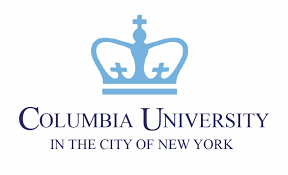
Graduate Student Population: 18,272
Average Tuition Before Aid: $79,752
Average Tuition After Aid: $22,637
Campus Pride Index: 4.5 out of 5 stars
“LGBTQ @ Columbia provides students with LGBTQ student group advising, events, education, advocacy, and other services and resources to help all students explore and better understand diverse queer and trans identities, experiences, and communities at Columbia and beyond. Additionally, as part of Multicultural Affairs, we hope to create a campus environment that is inclusive and supportive of student diversity in the area of sexual orientation and gender identity/expression.”
University of Oregon
Eugene, OR

Graduate Student Population: 3,638
Average Tuition Before Aid: $28,764
Average Tuition After Aid: $16,355
Campus Pride Index: 5 out of 5 stars
University of Oregon’s Lesbian, Gay, Bisexual, Transgender Education, and Support Services
“There’s a reason we’ve been recognized nationally as one of the best colleges for LGBTQIA+ students. From gender equity housing options to LGBTQIA+ protections, we are committed to creating an environment of respect and encouragement for all of our students.”
Montclair State University
Montclair, NJ

Graduate Student Population: 4,631
Average Tuition Before Aid: $32,108
Average Tuition After Aid: $19,949
Campus Pride Index: 5 out of 5 stars
Montclair State University’s LGBTQ Center
“Montclair State University gives students so many ways to connect, grow, and advocate. Students can pursue degrees in Gender, Sexuality, and Women’s studies and Lesbian, Gay, Bisexual, Transgender, Queer studies. They can also live in the LGBTQ+ Residential Community or Stonewall Suites and get involved in a wealth of clubs like Q-mmunity, Beyond Binaries, Queer and/or Trans People of Color (QTPoC), and Transcending Boundaries.”
New York University
New York, NY
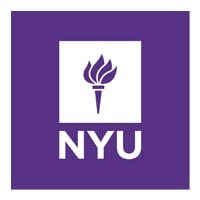
Graduate Student Population: 26,981
Average Tuition Before Aid: $75,502
Average Tuition After Aid: $42,397
Campus Pride Index: 4.5 out of 5 stars
New York University LGBTQ+ Center
“The NYU LGBTQ+ Center creates a welcoming environment for students, faculty, staff, and alumni to engage with and develop their understanding of LGBTQ+ communities through programs, events, learning and development, support, resource sharing, and consultation.”
University of Rochester
Rochester, NY

Graduate Student Population: 5282
Average Tuition Before Aid: $75,190
Average Tuition After Aid: $29,373
Campus Pride Index: 4.5 out of 5 stars
LGBTQ at University of Rochester
“What makes an LGBTQ-friendly campus? The answer to that question can be very different for each student; however the University of Rochester aims to be an inclusive and welcoming environment for everyone’s needs.”




